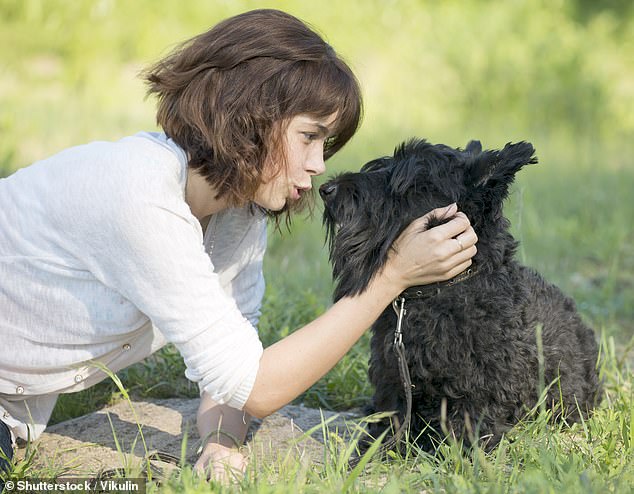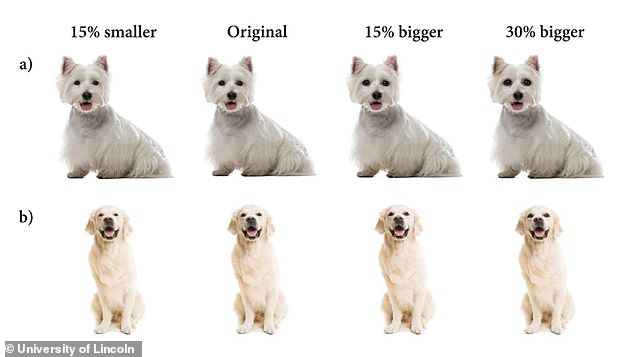The booted effect: Women speak with a higher voice to animals with bigger EYES, research shows
>
- Scientists have used the name Puss to describe an unusual effect
- Women — but not men — speak in a higher pitch to larger-eyed dogs
With his trademark boots and big eyes, Puss is arguably one of the cutest characters in cartoon history.
Now scientists have used the character’s name to describe an unusual effect.
In a new study, researchers at Lincoln University asked participants to talk to dogs with different sized eyes.
They found that females — but not males — spoke in a higher pitched voice when addressing larger-eyed puppies.
The team has dubbed this the “Puss in Boots Effect,” saying it reveals important differences in how men and women perceive “cuteness.”
With his trademark boots and big eyes, Puss is arguably one of the cutest characters in cartoon history. Now scientists have used the character’s name to describe an unusual effect

In a new study, researchers at Lincoln University asked participants to talk to dogs with different sized eyes. They found that females—but not males—speaked in a higher pitched voice when addressing larger-eyed puppies (stock image)
Previous studies have shown that when communicating with babies and dogs, we tend to speak in an exaggerated tone to get their attention.
However, how this speech varies between different dogs has remained unclear until now.
For the study, the team enlisted 21 male and 24 female participants, who had to speak to pictures of dogs from 12 different breeds.
The photos were manipulated so that each dog’s eyes were 15 percent smaller, 15 percent larger, or 30 percent larger than normal.
An online survey also asked more than 400 people to rate the gender, age and “cuteness” of the images.
The results showed that women — but not men — spoke in a higher pitched voice when they addressed dogs with larger eyes.
Women also rated the dogs with larger eyes as being younger than those with smaller eyes.
While the reason for this effect remains unclear, the researchers believe it is due to a phenomenon called neoteny, in which larger-eyed animals are perceived as more juvenile.

For the study, the team enlisted 21 male and 24 female participants, who had to speak to pictures of dogs from 12 different breeds. The photos were manipulated so that each dog’s eyes were 15 percent smaller, 15 percent larger, or 30 percent larger than normal
Dr. Holly Root-Gutteridge, co-author of the study, said: ‘The research tells us a new fact about how men and women react differently to ‘cuteness’, even on a subconscious level, because men reacted less to the changes in the eyes. . size than women.
“It also confirms that we as humans are more responsive to the perceived youthfulness of animals.”
However, the researchers found that the booted boot effect has a limit.
Jemma Forman, co-author from the University of Sussex, said: ‘WWhen the eye size gets too big and looks out of place, an “uncanny valley” effect sets in, with the dogs generally becoming less pleasant and distressing to watch.
“That’s why females speak with a less exaggerated vocal range to dogs with large, creepy eye sizes.
“This effect is more apparent in breeds such as the Pug or Pomeranian, dog breeds that already have relatively large eyes relative to their head size.”
